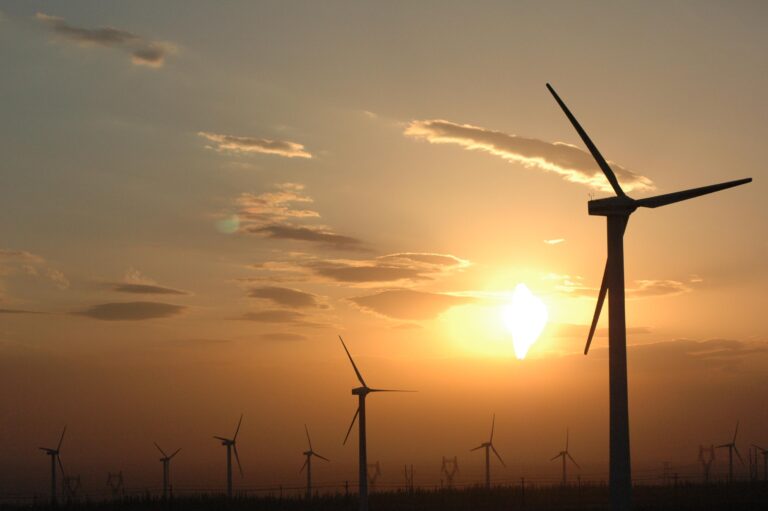The United Kingdom’s wind powered generating sets market is poised for significant expansion over the coming decade, with projections indicating a rise to 651,000 units and a market value of $54.8 billion by 2035. According to a recent report by IndexBox, this growth is driven by increasing government initiatives to promote renewable energy, advancements in wind power technology, and rising demand for sustainable electricity solutions across the country. As the UK accelerates its transition to a low-carbon economy, the wind power sector is set to play a pivotal role in meeting future energy needs and achieving climate targets.
UK Wind Powered Generating Sets Market Poised for Significant Growth Through 2035
The UK’s wind powered generating sets market is on track for robust expansion, with forecasts indicating a surge to 651,000 units by 2035. Driven by increasing government incentives, advances in turbine technology, and heightened environmental awareness, this growth signals a transformational shift toward sustainable energy sources. Notably, offshore wind farms are playing a critical role, supported by enhanced infrastructure and strategic policy frameworks aimed at achieving net-zero carbon emissions by mid-century.
Key factors contributing to this upward trajectory include:
- Technological innovation: Development of higher capacity turbines and improved energy storage solutions.
- Policy support: Expanding green energy subsidies and stricter emissions regulations.
- Investment surge: Increased funding from private and public sectors fueling new projects.
- Grid modernization: Integration of smarter grids for efficient energy distribution.
Financially, the market is projected to reach approximately $54.8 billion, reflecting both the growing demand and the rising costs of next-generation equipment. The table below outlines the expected market volume and value progression over key milestone years:
| Year | Market Volume (Units, Thousands) | Market Value (Billion USD) |
|---|---|---|
| 2025 | 320 | 24.5 |
| 2030 | 480 | 39.3 |
| 2035 | 651 | 54.8 |
Key Drivers and Challenges Shaping the Future of Wind Energy in the United Kingdom
The trajectory of wind energy growth in the UK is propelled by a combination of technological advances and supportive policy frameworks. Innovations in turbine efficiency, alongside the expansion of offshore wind farms, are significantly enhancing the sector’s output potential. Government initiatives, such as the Contracts for Difference (CfD) scheme, continue to incentivize investment, driving down costs and boosting market confidence. Additionally, the UK’s commitment to achieving net-zero carbon emissions by 2050 reinforces wind energy as a cornerstone in its renewable energy strategy.
Despite the promising outlook, the industry faces several challenges that could temper growth. The complexity of integrating large-scale wind generation into the national grid requires considerable upgrading, creating logistical and financial hurdles. Furthermore, environmental concerns, including the impact on marine ecosystems and local wildlife, raise regulatory scrutiny. The supply chain’s vulnerability to global disruptions also threatens timely project delivery, particularly amidst recent geopolitical tensions. Stakeholders must navigate these obstacles carefully to sustain momentum toward the ambitious 2035 targets.
- Key Drivers: Technological innovation, government incentives, offshore wind expansion
- Major Challenges: Grid integration, environmental regulations, supply chain disruptions
| Factor | Impact | Outlook |
|---|---|---|
| Technological Innovation | Higher efficiency and capacity | Strong positive |
| Government Support | Investment growth and cost reduction | Stable and growing |
| Grid Challenges | Integration complexity | Significant hurdle |
| Environmental Concerns | Potential regulatory delays | Moderate risk |
Strategic Recommendations for Investors and Manufacturers in the UK Wind Energy Sector
To capitalize on the robust growth trajectory of the UK’s wind powered generating sets market, investors and manufacturers must emphasize long-term partnerships and technological innovation. Prioritizing collaboration with local supply chains can significantly reduce costs and enhance resilience against global disruptions. Additionally, embracing cutting-edge innovations like digital twin technology, advanced blade materials, and predictive maintenance will be crucial for maintaining a competitive edge in an increasingly crowded marketplace.
Strategic agility also necessitates focusing on market segments with the highest growth potential. Below are key areas warranting concerted attention:
- Offshore Wind Farms: Expansion driven by government incentives and favorable regulatory frameworks.
- Energy Storage Integration: Enhancing reliability and grid stability to address intermittency challenges.
- Small-Scale and Community Projects: Rising demand for decentralized energy solutions supporting local economies.
| Recommendation | Impact | Timeframe |
|---|---|---|
| Forge local partnerships | Cost reduction & supply chain resilience | Short to Mid-term |
| Invest in advanced tech R&D | Operational efficiency & product differentiation | Mid to Long-term |
| Target offshore & small-scale projects | Market share expansion | Immediate to Mid-term |
In Conclusion
As the UK accelerates its transition toward renewable energy, the wind-powered generating sets market is poised for significant growth, with projections indicating a surge to 651,000 units and a market value of $54.8 billion by 2035. This expansion underscores the country’s commitment to sustainability and energy independence, while highlighting the vital role wind technology will play in shaping the future energy landscape. Stakeholders and investors alike are closely watching this dynamic market, which promises both challenges and opportunities in the years ahead.




